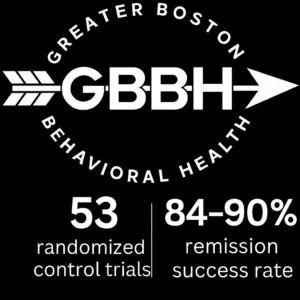Eye Movement Desensitization and Reprocessing (EMDR) is one of the most quietly powerful tools in trauma-informed mental health therapy. It’s structured, research-backed, and surprisingly gentle—but the breakthroughs you experience in session can feel like a wave, stirring up old emotional sediment even as it clears your path forward.
And if you’re new to EMDR, especially as someone exploring life without numbing out or over-functioning, you might be wondering: What do I do with everything I just felt in there?
At Greater Boston Behavioral Health, we specialize in helping clients carry their healing out of the therapy office and into the daily rhythms of life. EMDR isn’t just about what happens in the chair—it’s about how you learn to feel safe in your own mind again, moment by moment.
1. Understand That Your Brain Is Still Working
After an EMDR session, your brain is like a computer still running a powerful update in the background. You might feel lighter, foggier, emotionally raw, or unusually calm—sometimes all in one afternoon.
This is normal.
EMDR activates memory processing in your central nervous system, and that process can continue for days. Integration doesn’t mean doing more—it means allowing what’s already happening to unfold without resistance.
Give yourself time. Cancel non-urgent plans. Stay hydrated. Let your brain complete the work it started in the session.
2. Use Bilateral Movement to Reground
EMDR’s signature bilateral stimulation (eye movements, taps, or tones) doesn’t just “activate” your brain—it creates the rhythm that helps trauma process safely.
You can mimic this at home in subtle ways:
- Take a walk where your arms and legs swing naturally
- Lightly tap your knees or shoulders in an alternating pattern
- Listen to bilateral audio (headphones required) with tones that move from left to right
Think of these tools like mini tuning forks for your nervous system. You’re not reprocessing trauma on your own—you’re reminding your body of the safe rhythm of healing.
3. Anchor Your Safe Space to the Real World
Many EMDR sessions begin by building a “safe place”—a mental image or sensory memory that soothes and protects.
Don’t let this stay in the therapy room. Bring it into your environment:
- Burn the same candle at home that you smelled while building your safe place
- Save a picture of your imagined scene as your phone lock screen
- Create a playlist that evokes the feeling of your safe space
By giving your brain consistent sensory reminders, you reinforce that sense of internal safety wherever you are—even in rush hour traffic on I-93 or while waiting in a long line at the grocery store.
4. Journal With Curiosity, Not Pressure
After EMDR, your brain may reveal things slowly—flashes of memories, insights, or just strong feelings with no clear source.
Journaling helps you notice patterns without needing to fix them. Start with prompts like:
- “What surprised me after today’s session?”
- “What did my body feel like when I woke up today?”
- “What would I tell a friend if they felt what I’m feeling now?”
This isn’t homework—it’s observation. You’re not trying to “get it right.” You’re just making space for your healing to speak.
5. Recognize That Emotional Flare-Ups Are Part of the Process
Sometimes, a memory you thought was “done” might bubble up again. Or a mood swing might hit hard after a session. This doesn’t mean EMDR isn’t working—it means it is.
Processing trauma isn’t linear. One week might feel light and freeing; the next could leave you wanting to pull the covers over your head.
When this happens:
- Name what you’re feeling without judgment (“I feel sad and I don’t know why”)
- Use grounding tools like 5-4-3-2-1 or cold water on your wrists
- Text a friend or leave yourself a voice memo if journaling feels too slow
Healing is messy. But it’s still healing.
6. Integrate EMDR Into Small Moments, Not Big Rituals
You don’t need a whole new routine to benefit from EMDR between sessions. Often, it’s the smallest acts that help you shift:
- Pause and take three bilateral breaths (inhale left, exhale right) before meetings
- Keep a grounding object in your pocket to touch when anxious
- Let yourself rest—no explanation needed—on days when processing feels heavy
You’re not “doing EMDR wrong” if you’re not meditating or journaling for hours. You’re allowed to make healing human.
And if you’re looking for EMDR in Boston, MA, know that it’s okay to ask for help customizing your tools.
7. Keep an Open Line With Your Therapist
Between sessions, you might feel unsure about what to share next time, or even wonder, “Was that last session supposed to feel like that?”
Bring it in. Every session is a collaboration.
You don’t need to have the “right” memories or responses for EMDR to work. All you need is openness and a safe enough space to be honest. That’s what therapy is for.
And if you’re near Dedham or Needham, MA, our team at Greater Boston Behavioral Health is here to help you reconnect when life gets noisy.
FAQ: EMDR Integration in Everyday Life
How long does EMDR integration take after a session?
It varies. Some people feel settled within a day; others need a few days to process. Trust your body’s timeline and let your therapist know if things feel intense or overwhelming.
Can I do EMDR on my own?
No—EMDR should always be facilitated by a trained professional. However, you can use EMDR-inspired tools like bilateral movement, grounding, and journaling to support your healing in between sessions.
What if I feel worse after a session?
Feeling emotionally activated or drained can be part of the healing process. If you’re concerned, don’t hesitate to reach out to your therapist. Processing trauma can feel uncomfortable, but it should never feel unsafe.
Should I avoid certain things after EMDR?
Try not to schedule high-stress events or demanding conversations right after a session. Your brain may need calm space to continue processing.
Is EMDR right for someone who’s sober curious?
Absolutely. EMDR isn’t just for people with formal PTSD diagnoses. If you’re exploring your relationship with coping, identity, or emotional regulation, EMDR can help clear out what’s underneath the habits you’re reconsidering.
You Deserve to Feel Whole—Inside and Outside the Therapy Room
EMDR doesn’t just help you survive your past. It gives you tools to live more fully in the present. And when you carry that presence into your daily life, healing stops being a moment—it becomes a movement.
Ready to learn more? Call (888) 450-3097 or visit our EMDR therapy program at Greater Boston Behavioral Health to explore how EMDR can support you in Boston, Massachusetts.


